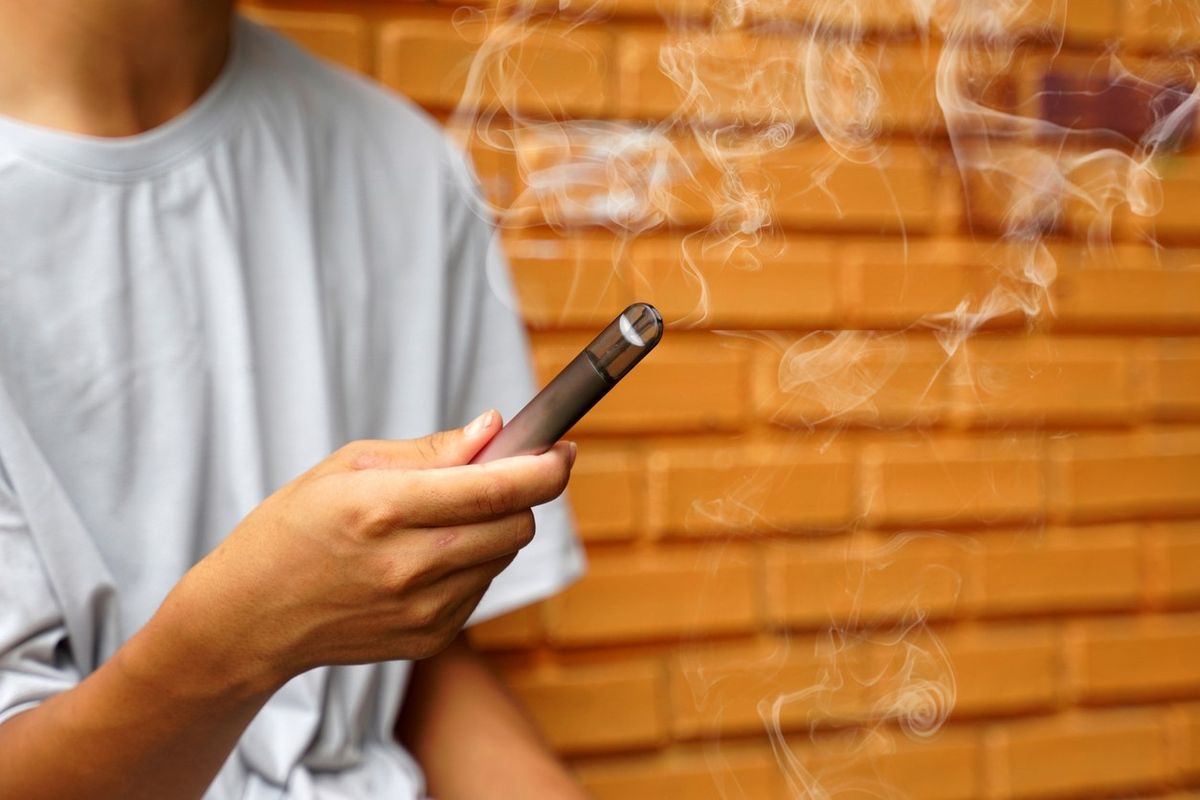New research published by the Public Health Agency (PHA) in Northern Ireland has laid bare the alarming prevalence of e-cigarette use among young people, with nearly half (46 per cent) of Year 14 pupils identified as current vapers.
The ‘Behavioural insights into youth vaping in Northern Ireland’ report, which surveyed over 7,500 students aged 11-18 across 91 post-primary schools, offers critical insights into the motivations, perceptions, and experiences of young people regarding vaping and tobacco use.
The findings are intended to inform the future design of targeted interventions and communications on vape use by young people.
The study revealed a stark increase in vaping prevalence with age, with Year 14 pupils being ten times more likely to vape than those in Year 8 (four per cent). Overall, 15 per cent of young people reported currently using vapes.
The majority of vapers (76 per cent) had never smoked traditional cigarettes before trying an e-cigarette, and a significant 33 per cent of these "never-smokers" have since experimented with cigarettes.
Peer influence and curiosity were identified as the primary drivers for young people initiating vaping, with 57 per cent stating they did so "because most other people are doing it." The desire to appear "cool" and the general popularity of vaping were also significant factors. Among current vapers, the initial curiosity of trying a vape remained a key motivator.
The report also highlighted the ease of access to vapes for young people, with friends and family being the most common sources. Furthermore, the sharing of vapes is widespread, with nearly three-quarters of ever-vapers admitting to sharing their devices.
A concerning number of young people (around 40 per cent of ever-vapers) reported experiencing side effects such as headaches, dizziness, breathlessness, coughing, anxiety/stress, nausea, and increased heart rate and tiredness.
“Young people are aware of or had experience of some of the short-term risks associated with vaping such as respiratory issues,” Elaine Wilmot, Health Intelligence Manager at the PHA, said.
“Although the majority recognised that nicotine use can lead to addiction and dependency, there is a general lack of understanding that nicotine use can increase the risk of developing or intensify mental health problems such as anxiety and depression.”
Wilmot flagged the influence of social media as a major concern, with platforms often glamorising vaping through celebrity and influencer endorsements, downplaying the risks and nicotine content. The school environment was also identified as a contributing factor, with vaping in school bathrooms being common and potentially normalising the behaviour.
“Vaping on school premises, particularly in the bathrooms, is very common and difficult to manage, and as a result young people are being regularly exposed to vaping which can contribute to it being normalised, and can result in them viewing it as an acceptable behaviour,” Wilmot said.
Despite the high prevalence, around two-thirds of current vapers (64 per cent) had attempted to quit, with 55 per cent experiencing some period of success. However, older students were less likely to have tried to quit compared to their younger counterparts. Encouragingly, over a third (35%) of current vapers expressed a desire to stop, with a further 34 per cent indicating "maybe."
Tobacco use also a concern
The report also shed light on tobacco use among young people. Overall, nine per cent of pupils reported having smoked a cigarette, with five per cent identified as current smokers. Notably, experimentation with cigarettes often began in teenage years, but a concerning 14 per cent had tried their first cigarette at primary school age (10 or below). Young people from more deprived areas were also more likely to have experimented with cigarettes.
“By providing information on vaping and raising awareness of the risks, we can help empower families and people working in care and education settings to have open and engaging conversations with young people to steer them away from these products,” Colette Rogers, Strategic Lead for Tobacco Control with the PHA, said.
“Parents and guardians can play an important role in helping young people understand the risks, so they don’t choose to use products such as vapes without realising the harm they could be exposing themselves to. Don’t wait until there’s a problem before you decide to talk.
“It is important to advise young people that regardless of what they have been told, even by a close friend, that vaping is not cool and they shouldn’t start to use these products as the long-term health effects are not yet fully known.”


